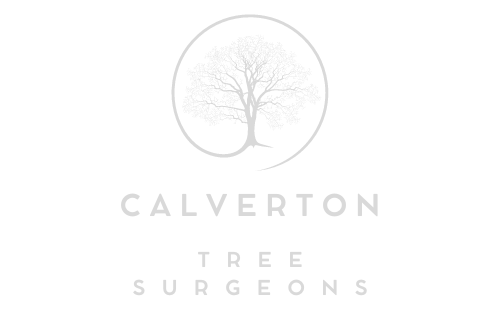The Role of Tree Surgery in Controlling Fungus and Bacterial Infections
Trees play a crucial role in maintaining the ecological balance around your property. They provide shade, improve air quality, and enhance the aesthetic appeal of your landscape. However, just like any living organism, trees are susceptible to various diseases, including fungal and bacterial infections. These infections can significantly affect their health and appearance, sometimes leading to the death of the tree if not managed properly.
In this article, we will explore how tree surgery can help control fungal and bacterial infections in trees, the importance of early intervention, and how professional tree surgeons can help keep your trees healthy.
How Fungus and Bacterial Infections Affect Trees
Fungal and bacterial infections can cause a range of issues in trees, including discolouration, dieback, wilting, and the rotting of wood. These infections may spread quickly if left untreated and can result in weakened trees that are more susceptible to other pests or environmental stresses. The following are some of the common types of fungal and bacterial infections that can affect trees:
- Fungal Infections: These include root rot, powdery mildew, and various types of mould. Fungal infections often thrive in moist environments and can spread through the air, soil, or via insects. They can cause the decay of tree tissue, leading to structural weakness.
- Bacterial Infections: Bacteria such as Erwinia or Pseudomonas can lead to cankers or galls, typically seen on the bark or branches. They often cause yellowing of the leaves, wilting, and a general decline in tree health.
Both types of infections need to be treated promptly to prevent long-term damage and to safeguard the overall health of the tree.
The Role of Tree Surgery in Disease Control
Tree surgery plays a critical role in controlling fungal and bacterial infections by addressing the underlying health issues of trees, removing infected areas, and preventing further spread of disease. Here’s how tree surgery can help:
1. Early Detection and Diagnosis
The first step in controlling any tree disease is early detection. Professional tree surgeons are trained to identify the signs of infection before they become widespread. They can inspect your trees for any unusual symptoms such as discolouration, wilting, or unusual growth patterns. Early detection allows for swift intervention, reducing the chances of a tree succumbing to disease.
2. Pruning Infected Branches
One of the most common treatments for fungal and bacterial infections is pruning. A professional tree surgeon can identify infected branches or areas that may be harbouring disease. Pruning helps remove diseased or dead wood, which not only prevents the infection from spreading but also allows the tree to focus its energy on healthy growth. It is vital to use the correct pruning techniques to ensure that the infection does not spread through improper cuts.
3. Treating Infected Areas
Once the infected areas are removed, tree surgeons may apply fungicides or bactericides to the wound sites to prevent further infection. These treatments can stop the spread of disease and allow the tree to heal properly. It’s important to use the right treatments, as some chemicals can be harmful to the tree if used incorrectly. A professional will know the best approach for your specific tree and infection.
4. Providing Ongoing Care
After an infection has been treated, trees may require ongoing care to ensure they recover fully. This could involve mulching to help retain moisture, fertilising to encourage strong growth, or monitoring the tree for signs of recurrence. A professional tree surgeon will provide advice on how to best care for your tree and prevent future infections.
Why Professional Tree Surgery Is Essential
While DIY treatments for tree infections may seem like a cost-effective solution, they often fail to address the root cause or prevent the disease from returning. Hiring a professional tree surgeon is essential for ensuring that fungal and bacterial infections are properly diagnosed and treated. Here are some reasons why professional tree surgery is crucial:
- Expert Knowledge: Tree surgeons have in-depth knowledge of different tree species and the diseases that affect them. They know how to identify, treat, and prevent infections effectively.
- Specialised Equipment: Tree surgery requires specialised tools and equipment to safely remove infected areas and apply treatments. Professionals have access to the latest technology to ensure the job is done correctly.
- Safety: Working with trees can be dangerous, especially when dealing with infected or decaying wood. Tree surgeons are trained in the safe use of equipment and can work at heights without risking injury.
- Long-Term Health: Professional tree surgery not only addresses current infections but also focuses on long-term health and prevention. By keeping your trees well-maintained, you can help avoid future problems and keep your trees thriving for years to come.
Conclusion
Tree surgery plays a vital role in controlling fungal and bacterial infections in trees. Early detection, professional pruning, and proper treatment can significantly improve the health and longevity of your trees, preventing the spread of disease and ensuring that your trees remain a beautiful and valuable part of your landscape.
If you have concerns about the health of your trees or suspect an infection, it’s important to seek professional advice from a qualified tree surgeon. At Calverton Tree Surgeons, we specialise in diagnosing and treating a wide range of tree diseases. Contact us today to discuss how we can help protect your trees and keep them healthy for the future.
Call us on: 0115 647 1154
Click here to find out more about Calverton Tree Surgeons
Click here to complete our contact form and see how we can help with your tree needs.

